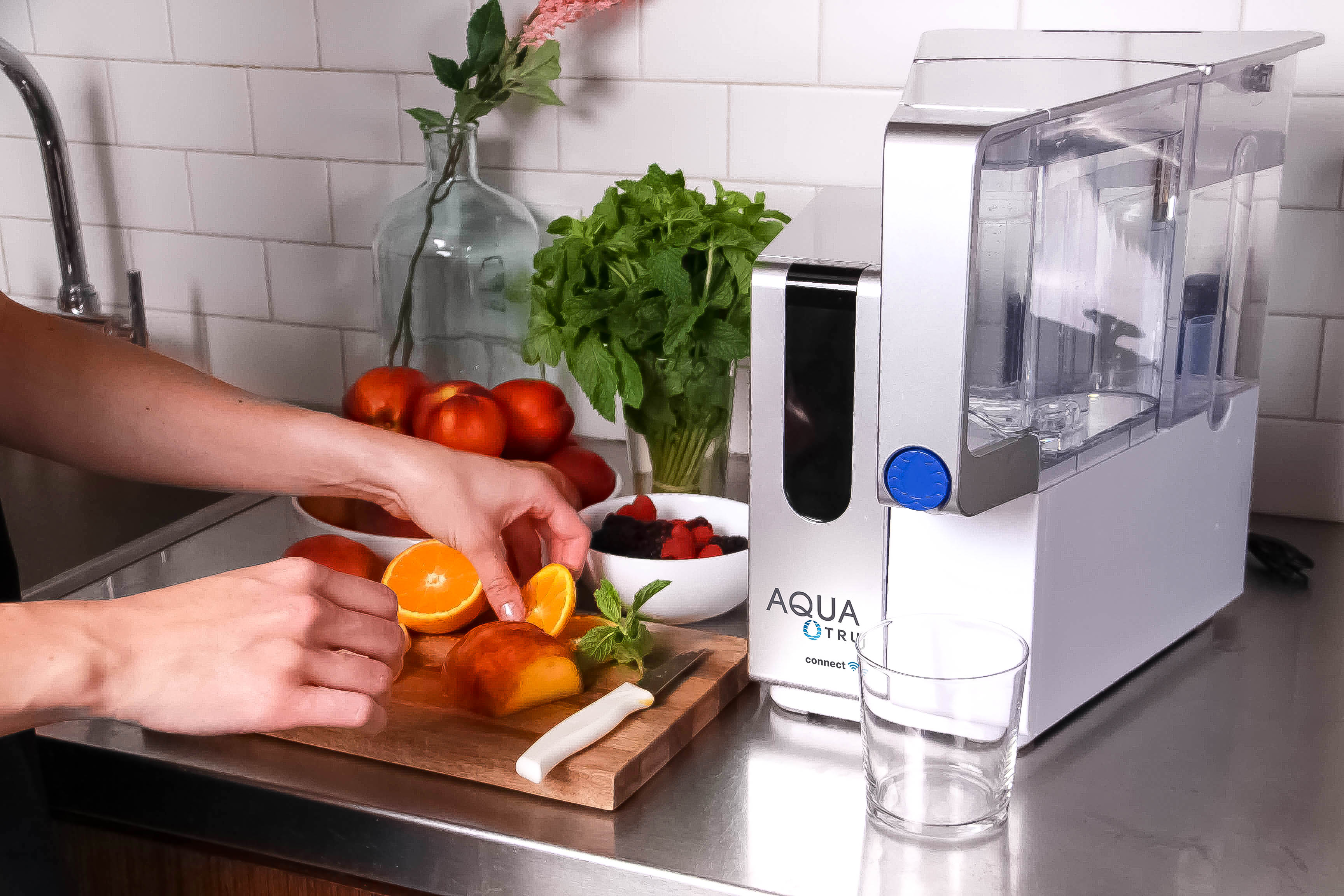As students head back to school, it’s back to packing lunches, whipping up those after school snacks and trying out the latest 30-minute meal. While we often think of boiling water as a safety measure to rid our water of dangers, it can actually exacerbate contaminants like heavy metals, dissolved solids, and other chemicals by further concentrating them in the water. Regardless if you’re cooking pasta or brewing coffee, here’s why you should cook with purified water.
Why is Purified Water Important When Cooking?
While we often don’t have to worry about waterborne diseases in the US, our drinking water is far from safe. In fact, researchers have discovered more than 320 dangerous substances in US tap water systems.
These contaminants—like perfluoroalkyl substances (PFAS), pesticides, lead, radioactive materials, and arsenic—are linked with adverse birth and reproductive outcomes, impaired brain development, and cancer. Unfortunately, scientists continue to discover new toxic substances in drinking water all the time.
Worse, boiling is not a practical solution, because it doesn’t eliminate contaminants like it does waterborne bacteria. In fact, boiling may actually exacerbate exposure to chemicals like solvents and nitrates—which is the last thing you’d want in your homemade ravioli!
Even if the toxic nature of these contaminants aren’t a concern, impaired taste should be! Purified water is chef-approved for its ability to reduce unwanted chemicals, minerals, and aromas that influence flavor.
So, after you don your cooking apron and before you say “bon appétit,” be sure to fill up your pots, pans, and measuring cups with purified AquaTru water.
How and When to Use Purified Water to Cook

While tea and coffee drinkers might be familiar with using purified water to get the purest and best-tasting jolt of caffeine, it’s actually an important ingredient in most of our recipes.
Brewing tea & coffee
Purified water will remove chlorine and sediment, which not only contributes to a purer tasting cup of tea or coffee, but also helps reduce risk of problems for a coffee machine (scale build-up, heating inefficiencies, blocked pipes, and performance decreases).
If you’re a true aficionado looking for the support of minerals to extract more flavor from your favorite blend of beans, you can even install a pH + Mineral Boost Alkaline Carbon VOC Filter to get café-quality coffee from the comfort of home.
Boiling pasta or veggies
Remember the 320+ toxic substances we mentioned earlier? They can be absorbed by whatever we’re cooking—whether it’s boiled potatoes or linguini. Pasta alone can absorb about 1.8 times its dry weight in water, meaning that it can soak up contaminants like lead, chlorine, and PFAS, too.
The chlorine can even end up having a slight bleaching effect on your favorite veggies, which may alter their taste and odor. For these reasons, you should also wash all fruits and veggies in purified water, too.
Cooking soups & stocks
Generally speaking, our favorite soups are about 92% water. As such, using contaminated water is sure to impact the flavor and health benefits of your soups or stocks.
Soaking beans
Ever realize that when you soak beans to prepare them for cooking it requires a significant amount of water? This is because most bean varieties will expand to about two or three times their original size as they absorb water (and the toxins it may contain).
Not only would many people want to avoid possible contaminant absorption in their chickpeas and black beans, but tap water is also associated with tougher dried bean skins, which may negatively impact the eating experience.
Brewing kombucha
If you’re brewing a homemade batch of kombucha, you have no choice but to use purified water. This is largely because chloramine and chlorine are bacteria-killing disinfectants—which means they’ll kill your kombucha scoby, too!
Making sourdough starter
Sourdough starter is another ingredient that relies on healthy bacteria produced during the fermentation process. This makes chlorinated water a big no-no ingredient.
Plus, do you really want to end the month(s) long preparation process with a loaf of bread that may contain contaminants like pesticides, arsenic, and lead?
Conscientious Cooking with Purified Water
Whether your culinary experience is limited to boxed macaroni and cheese, or you have a little one you’re making homemade boiled baby food for, pure, contaminant-free water is a key ingredient. AquaTru is here to transform your tap water and rid it of 83 of the most dangerous contaminants. If you’re no stranger to cookbooks and dinner parties, our Under Sink model will provide limitless purified water for all your cooking needs.
